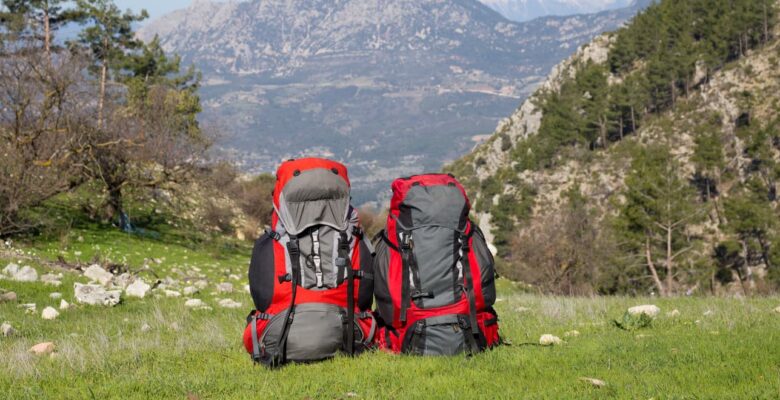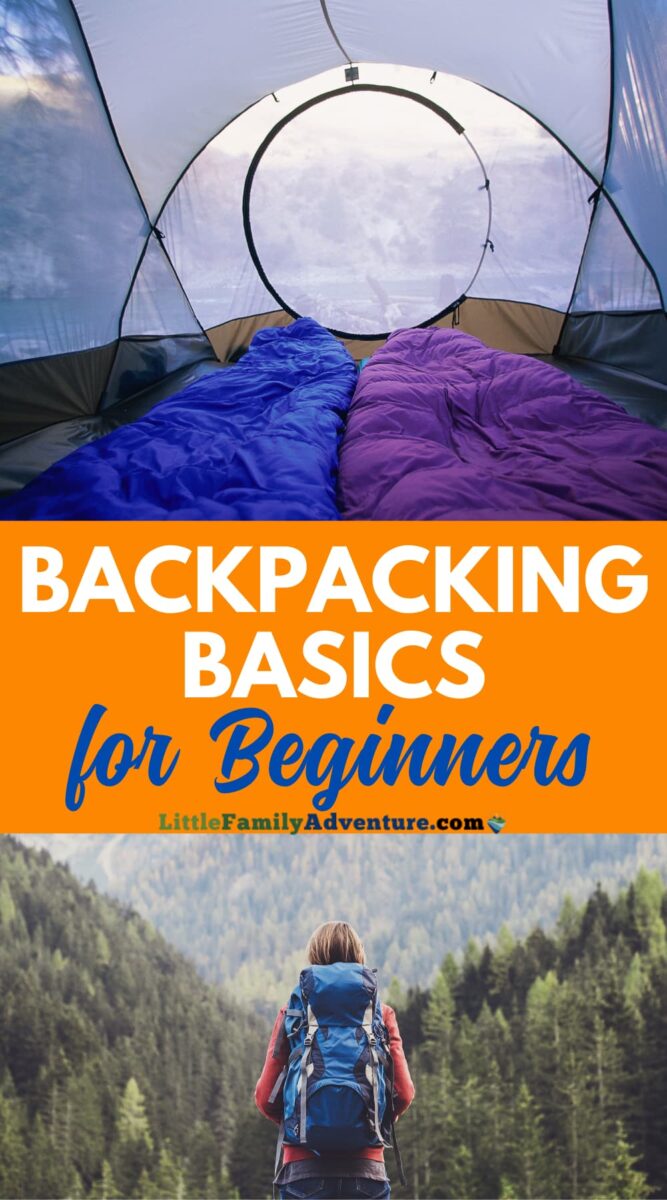If you’re seeking an outdoor adventure, then backpacking and camping in the wild are the right things for you. Not only will you get to connect with nature, but you’ll also build some serious survival skills, gain experience, and, as backpacking becomes a regular and enjoyable part of your life, learn from previous mistakes.
In this article, we will present to you some of the most important gear that you should take with you in order to stay safe in the outdoors. Hopefully, by the end, you’ll be better prepared and confident to start planning your next backcountry journey.
This article contains affiliate links. We earn from qualifying purchases.

Beginner Backpacking Gear List
There are some crucial things that you must have in your backpack at all times. If you’re an outdoor enthusiast, then these are the most valuable pieces of equipment that you must have with you in your backpack.
Backpacking Tent
Your tent is something that you should deeply consider before buying. You shouldn’t go and buy the first one you see or go with the cheaper one. Investing in a sturdy tent is of utmost importance.
When it comes to backpacking, the most important thing to consider is to choose it from a collection of ultralight backpacking tents. While the tent should weigh as little as possible and be easy to carry on your bag, it should be durable and be the right size for you or your group. Choose a quality, professional tent that you can use for several years at least, and make sure it is waterproof! It will keep you sheltered and warm.
Sleeping Bag
Now that you’re sheltered, you’re all covered, right? Well, not quite. You still want to avoid sleeping on the cold, hard ground, with nothing but a blanket above you. This is where sleeping bags come in handy.
You can choose between synthetic or a down-filled sleeping bag, to keep you warm. Select one rated for the temperatures where you’ll be camping. Bring a compression bag to store your bag when not in use to reduce the bulk in your pack.

The three lightest sleeping bags ideal for the backcountry we have tested and recommend are:
- Kelty Cosmic 20 Sleeping Bag – Budget friendly bag with down insulation
- Sierra Designs Night Cap 20 – Zipperless design with synthetic insluation
- Morrison Outdoors Lil Mo 20 – Onsie designed for babies and toddlers with down insulation
Sleeping Mat
No matter how nice your sleeping bag is, if you lay it on the ground without a mat in between, you’ll feel every single pebble, stick, or leaf. That’s why sleeping mats are being used by almost all campers. They keep you protected from the cold ground and they help avoid unnecessary back pain.
These three are our top picks:
First aid kit and basic knowledge
This is probably one of the most important items on this list. Your first aid kit doesn’t have to be big, but should always contain a variety of bandages and antiseptic swabs, alcohol wipes for cleaning wounds, and you should be able to know how to use everything inside. It’s also great if you look up some videos online before going out in the wild. Knowing CPR is actually a life-saving skill in certain situations.
Masterclass offers an online wilderness survival skills class that is really good. It’s a great way to learn new skills or brush up before a trip. You can also get our hiking DIY first aid kit checklist here.

Comfy Backpacking Pack
The last thing you want on your journey is a sore back. That could happen if you wear a small, uncomfortable backpack that pokes you all the time. Investing in a nice, high-quality one will help out a great deal. All great backpacks share similar features:
- No pressure points on your back
- Foamy parts where the shoulders and the back lay flat
- Multiple compartments for better organization
- Enough space to fit all your stuff
Three backpacking packs we really like and recommend include:
- Osprey Ariel AG 55 Pack – Best Pack for Women via Outside Online readers
- REI Co-Op Tarn 40 – Best seller at REI
- Mountainsmith Scream 55L – Top pick on Amazon for budget packs
Cook Stove
Sitting down to a hot meal after a long day really is the most pleasant of experiences. You need something that will cook your food and keep it warm until you enjoy every bite of it. For this, nothing beats a backpacking stove! It doesn’t matter if you go for propane, alcohol, or a canister stove – you just have to make sure it’s the right one for your backpacking style.
Four backpacking camp stoves we really like and recommend include:
- Solo Stove Lite Kit with Cooking Pot 900 – lightweight wood burning canister stove – Read my review here.
- JetBoil Flash Cooking System – great all-in-one system (heat source and pot) using isobutane-propane canisters
- GSI Outdoor Pinnacle Pocket Stove – compact h2 burner mounts to any isobutane/propane canister for easy cooking with cooking pan or pan
- Wolf and Grizzly Campfire Trio – portable campfire set with grill that folds down to size of large enevelope and uses wood or charcoal

Lighter or waterproof matches
Nights can be pretty cold and if you want to get warm, you’ll need to set up a safe campfire. You will also want something to light your backpacking stove. If you’re feeling adventurous, you can use a firestarter stick or magnesium. If you need something foolproof, matches are your best bet!
Tip: Bring a second fire starting method as a backup.
Mess Kit
Dehydrated meals are a great food option when backpacking. Several brands offer premade meal options that can be cooked and eaten directly in the bag. Yet a mess kit to eat from is still a valuable item to add. It can be a plate and a spork or just a spoon and bowl.
We have and really like these mess kits:
- UCO 6 Piece Mess Kit
- MSR 2- person Mess Kit
- GSI Outdoors Pinnacle Dualist Bundle ( cooking pot and mess kits)
- Stanley Adventure Stainless Cook set (small cooking pot, bowls, and sporks)
Enough food and water
This is self-explanatory. You need to pack enough food and water for your trip. The amount will vary depending on the length of your hike or backpack, but don’t forget to calculate in some extra for emergencies! If you think that you packed enough, pack just a little more, just to be sure. It’s better to be safe than sorry.

Also shown Solo Stove and Cook Pot and UCO Mess Kit
Tip: Be aware of how much space food takes up in your bag! Freeze-dried meals can help out here!
Water Bottle
It doesn’t matter where you go hiking. When you walk long distances and do a lot of physical activities, you sweat. And when your body sweats, it also loses water. You need to replenish that lost fluid throughout the day to stay safe and healthy. Allow carry water bottles or a hydration pack.
Tip: If you are planning to be in an area with water sources, pack a water filter to fill up as you go. Otherwise, you will have to pack enough water and carry it with you.
Sunscreen
You’ve heard this countless times before, but it is so important that we have to list it here. Protect your skin! It will be exposed to the sun for many hours while you hike or while you rest by a campfire. Bring at least 30 SPF sunscreen with your backpacking gear and reapply every few hours.
Light source
You’ll be away from the city lights and it can get pretty dark out there. It is great to bring a headlamp with you, and some extra batteries or, if rechargeable, a battery backup or solar charger. That way, you’ll have your hands free at all times. If you don’t own one, a flashlight will do the exact same thing that a headlamp would do.
Note: We have and use our BioLite 200 headlamps most often. Read our review of the BioLite 200 here or shop Biolite products using our affiliate link.
Dry change of clothes
The worst thing that can happen to you is to get wet or sweaty and not have dry clothes to change into. You’re basically inviting the cold to come to you and to get you hard. You want to make this a pleasant experience, not something that will bother you and your bank account for two weeks.
If hiking and/or backpacking in cold weather, add a puffy jacket or warm rain jacket to stay warm. Also pack merino wool socks to wear with your hiking boots.

Bear Country Essentials
If you are backpacking in areas known to have bear activity, here are a few extra items to add to your backpacking checklist.
That’s all for now! If you have anything to add or if you don’t agree with anything on this backpacking checklist, please feel free to leave a comment below. We want to hear from you and we hope that this backpacking checklist helps you get started!
Fore more information on getting outdoors, check out these articles:
- The Ultimate How to Make Coffee Camping Guide – 22 Ways to Make Camp Coffee
- How to Introduce Your Partner to the Outdoors and Not Break Up
- 35+ Great Gifts for Hikers & Outdoorsy People
- 59 Camping Food Ideas- No Cooking Required for Breakfast, Lunch, Dinner & Dessert
Good luck on your next hiking trip! If you have more specific questions about where to backpack or advice from fellow outdoor families, join our Family Adventure Facebook group.




Great article! I totally agree about the tent. I once cheaped out and got a leaky one. Never again! And the sleeping bag tip is spot-on. I like my synthetic one for its quick drying. What’s your favorite piece of gear for backpacking?